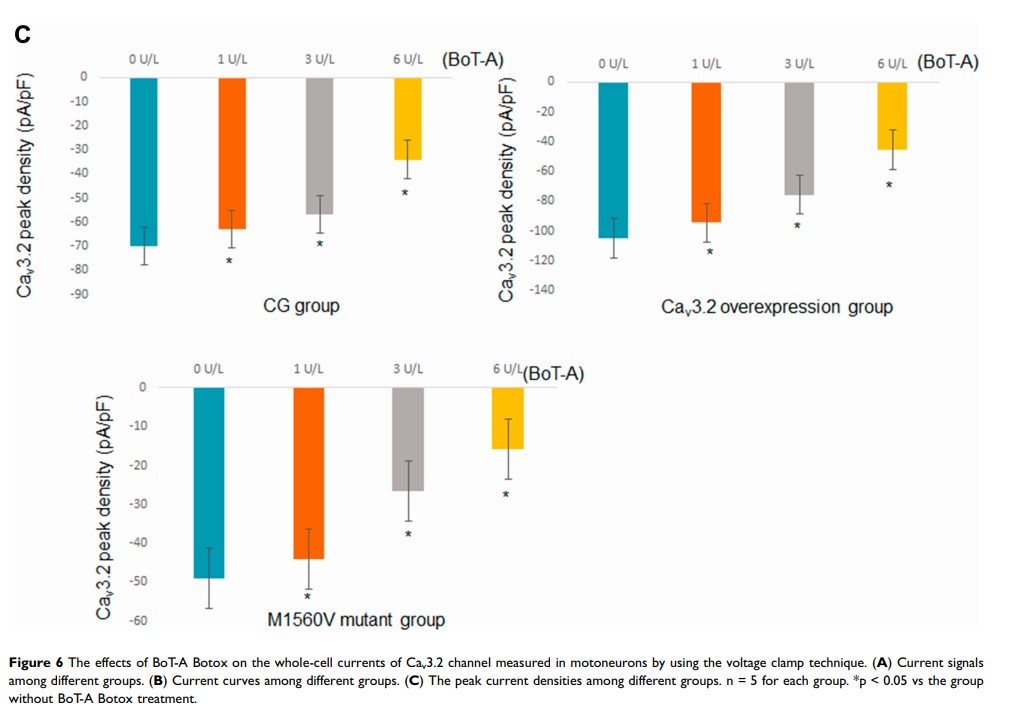9 7 7 8 0
论文已发表
注册即可获取德孚的最新动态
IF 收录期刊
- 3.3 Breast Cancer (Dove Med Press)
- 3.4 Clin Epidemiol
- 2.5 Cancer Manag Res
- 2.9 Infect Drug Resist
- 3.5 Clin Interv Aging
- 4.7 Drug Des Dev Ther
- 2.7 Int J Chronic Obstr
- 6.6 Int J Nanomed
- 2.5 Int J Women's Health
- 2.5 Neuropsych Dis Treat
- 2.7 OncoTargets Ther
- 2.0 Patient Prefer Adher
- 2.3 Ther Clin Risk Manag
- 2.5 J Pain Res
- 2.8 Diabet Metab Synd Ob
- 2.8 Psychol Res Behav Ma
- 3.0 Nat Sci Sleep
- 1.8 Pharmgenomics Pers Med
- 2.7 Risk Manag Healthc Policy
- 4.2 J Inflamm Res
- 2.1 Int J Gen Med
- 4.2 J Hepatocell Carcinoma
- 3.7 J Asthma Allergy
- 1.9 Clin Cosmet Investig Dermatol
- 2.7 J Multidiscip Healthc

肉毒杆菌毒素 A 可能影响脊髓损伤诱发的肌痉挛大鼠的 Cav3.2 钙通道亚基
Authors Ma K, Zhu D, Zhang C, Lv L
Received 3 April 2020
Accepted for publication 26 June 2020
Published 28 July 2020 Volume 2020:14 Pages 3029—3041
DOI https://doi.org/10.2147/DDDT.S256814
Checked for plagiarism Yes
Review by Single anonymous peer review
Peer reviewer comments 2
Editor who approved publication: Dr Qiongyu Guo
Introduction: Spinal cord injury (SCI) often causes muscle spasticity, which can be inhibited by using calcium channel blocker. Botulinum toxin type A (BoT-A) shows therapeutic efficacy on spasticity and may exert inhibitory effects on the calcium channel.
Methods: A rat model with muscle spasticity was established after SCI via contusion and compression. Different concentrations (0, 1, 3 and 6 U/kg) of BoT-A Botox were injected in the extensor digitorum longus (EDL) muscles of the right hindlimb in the muscle spasticity model. The changes of muscle spasticity and calcium level in EDL muscles were measured after the establishment of SCI-induced spasticity. Cav3.2 calcium channel subunit and its mutant (M1560V) were analyzed using Western blot before (input) or after immunoprecipitation with anti-FLAG antibody, and their currents were measured in motoneurons by using whole-cell voltage clamp recordings.
Results: SCI induced muscle spasticity, whereas calcium level in EDL muscles and expression of Cav3.2 was increased in the SCI model when compared with the sham group (p < 0.05). BoT-A Botox treatment significantly reduced muscle spasticity and calcium level in EDL muscles and Cav3.2 expression in a dose-dependent way (p < 0.05). The ratio of biotinylated to total Cav3.2 was reduced in the mutant (M1560V) of Cav3.2 and lower than that in the wild Cav3.2. BoT-A Botox intervention also reduced the current values of calcium channel and the ratio in a dose-dependent way (p < 0.05).
Discussion: BoT-A Botox possibly attenuates SCI-induced muscle spasticity by affecting the expression of Cav3.2 calcium channel subunit in the rat models. There may be multiple mechanisms for the function of BoT-A Botox. Further work is needed to be done to address these issues.
Keywords: botulinum toxin type A, muscle spasticity, Cav3.2 calcium channel, rat model, spinal cord injuries
